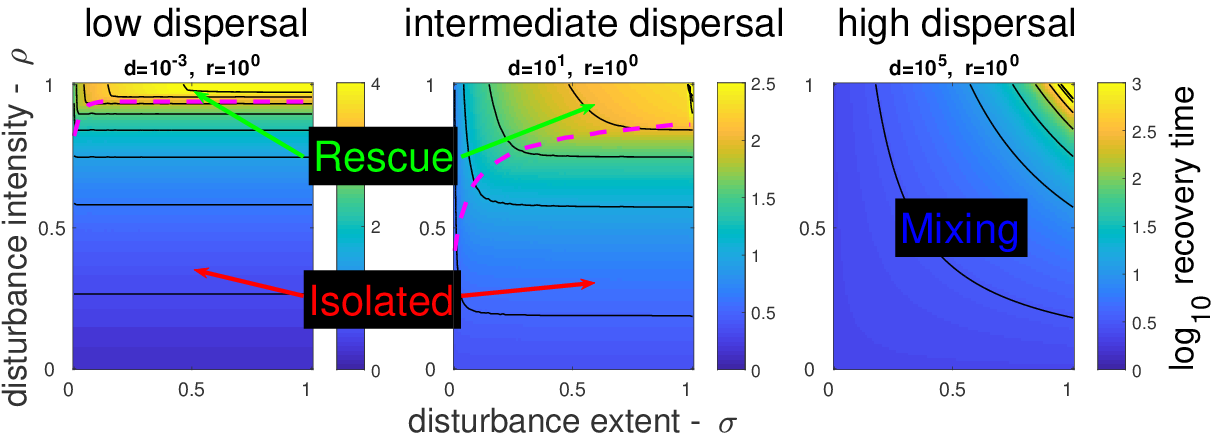Abstract
Identifying the drivers of ecosystem and population stability is a fundamental aspect of ecology. In an spatially explicit context, the basic ingredients to consider are the spatial structure of the landscape, the local dynamics of species, and their dispersal behavior which mediates between the former two. Numerous studies has looked at each of these components as a driver of stability, but little is known on the interplay between them. Missing has been a more integrative approach, able to map and identify the possible dynamical regimes which determine the response to perturbations, i.e. the stability properties of ecosystems and populations.
We focus on a simple, yet relatively general, scenario: the recovery of a homogeneous metapopulation from a single, spatially localized pulse disturbance. We find that the response can take one of three forms, each representing one of three dynamical regimes: Isolated, Interplay and Mixing. Using dimensional analysis we can predict the transition points between these regimes, and how these change with basic system properties such as its total area and the nonlinearities of local dynamics. We deduce a framework which enables us to address pertinent questions for ecology such as the effect of habitat fragmentation, which effectively pushes systems towards the Isolated regime, or of global change which may slow down local dynamics as conditions deteriorate, pushing systems towards the Mixing regime. Finally, we can also better position other studies that address various questions, from the stabilizing effect of disturbances on populations prone to synchrony-induced extinctions, to the mechanisms underlying biomass productivity in metacommunities.

